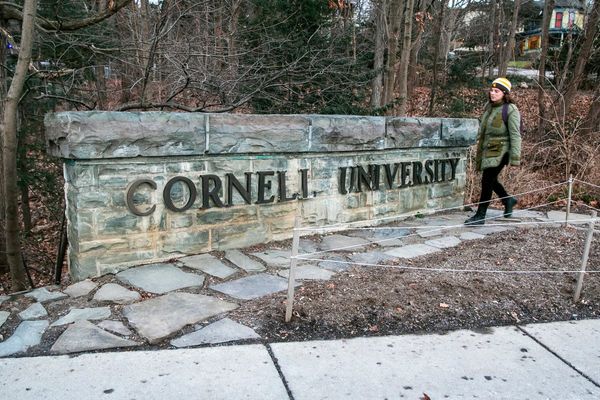A breakthrough new therapy has enabled mice to survive exposure to acute radiation, according to a new study that may lead to safer cancer treatment and save lives in the event of a nuclear war.
Acute ionising radiation, such as from nuclear fallout, can severely damage DNA, arresting cell division and hampering activation of the body’s immune system.
Studies have suggested that more people could die from exposure to radiation fallout than directly from an atomic explosion in the event of a nuclear war. That is because exposure to high radiation doses long after the explosion can still trigger DNA damage and mass cell death, killing people down the generations.
High radiation exposure can lead to GIS, or gastrointestinal syndrome, a complex condition in which the inner-lining cells of the intestines break down. Patients undergoing high-dose radiotherapy for pelvic and abdominal tumours have been found to experience GIS as well, but there is no treatment currently to protect people against such consequences of radiation exposure.
The new study, conducted by Chinese researchers and published in the journal Cell Death and Differentiation, found exactly how a key set of genes crucial for promoting cell death respond to radiation exposure.
The “stimulator of interferon genes”, or Sting, promotes cell death in response to DNA damage caused by acute radiation.
The researchers found that knocking out the function of Sting in mice increased their survival rate from 11 per cent to 67 per cent after exposure to harmful levels of radiation.
The study found normal mice experienced more severe abdominal injuries than those that had had their Sting proteins knocked out.
“Overall, our study revealed a novel pathway through which Sting regulates ionising radiation-mediated cell death,” scientists wrote.
Further analysis showed the rate of cell death in mice with Sting knocked out dropped from 45 per cent to 12 per cent after radiation exposure.
The researchers looked especially at tiny, hair-like projections in the mice intestines called villi which help absorb nutrients from food. They found that the height of individual villi in mice with muted Sting was “significantly greater” by around 2.3 times than in other mice, suggesting their guts were resisting radiation better.
Researchers said the findings could lead to therapies for controlling GIS upon exposure to high doses of ionising radiation or radiation therapy for tumours. “The therapies developed based on the new discovery of Sting proteins have shown great potential in protecting against radiation injury, enhancing cancer radiotherapy, and improving cancer treatment,” study lead author Sun Yirong told China Science Daily.







